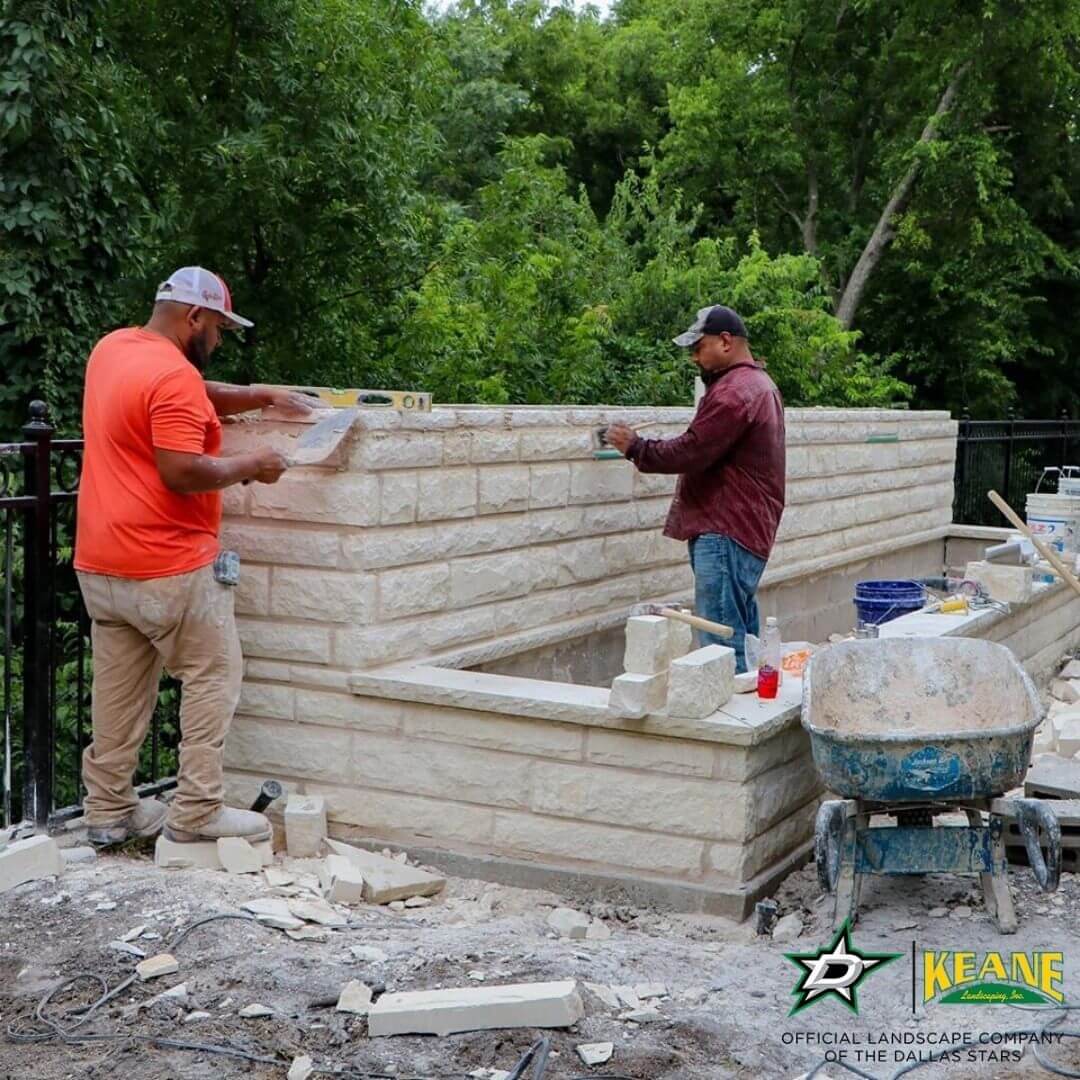Expert Step Repair Services: Guarantee Safety and Resilience
Expert Step Repair Services: Guarantee Safety and Resilience
Blog Article
Unlocking the Tricks of Sustainable Masonry Building And Construction Practices for Eco-Friendly Buildings
In the world of contemporary construction, the quest of lasting methods has actually come to be paramount. Amongst the myriad methods to green building, sustainable masonry construction stands apart as a tried and true and durable technique that holds a riches of untapped capacity. From the selection of products to innovative building methods, the secrets to attaining sustainability within masonry building and construction are complex and interesting. By discovering the benefits, materials, strategies, and future fads of sustainable stonework, a deeper understanding of just how these practices can shape the future of environment-friendly buildings arises.
Benefits of Lasting Masonry Building
Embracing sustainable stonework building methods not only reduces environmental effect but likewise uses long-term financial advantages to builders and areas. By using materials like recycled blocks, blocks, and stones, contractors can considerably reduce the carbon impact of their projects while promoting resource efficiency. Additionally, sustainable stonework construction techniques, such as correct insulation and thermal mass properties, can improve energy performance within buildings, causing lowered functional costs gradually.
Additionally, the toughness and durability of masonry structures add to long-lasting financial benefits. Structures built using lasting masonry techniques usually need much less repair and maintenance, translating to set you back financial savings for building contractors and homeowner. The durability of stonework materials likewise guarantees that structures continue to be secure and safe, lowering the need for frequent restorations or replacements.
Eco-Friendly Masonry Products
Making use of eco-friendly stonework materials is a pivotal step in the direction of enhancing the sustainability of construction methods and lessening environmental effect while maximizing long-lasting financial benefits. Sustainable masonry materials are sourced, generated, and made use of in a manner that decreases total ecological influence. Materials such as recycled bricks, redeemed rock, and sustainable concrete blocks are coming to be increasingly prominent choices for eco-conscious home builders. Recycled blocks, as an example, not only divert waste from land fills but additionally require much less energy to produce compared to brand-new blocks. Reclaimed rock supplies an unique aesthetic allure while reducing the need for brand-new quarrying. Lasting concrete blocks incorporate recycled accumulations and may include better insulation residential or commercial properties, contributing to energy efficiency in structures.
Moreover, natural materials like adobe, rammed planet, and straw bales give outstanding thermal mass residential or commercial properties, decreasing the demand for heating and cooling power. These products are usually locally readily available, promoting local economies and decreasing transportation-related carbon discharges. By selecting environmentally friendly stonework products, construction tasks can dramatically decrease their environmental impact and add to the development of much healthier, a lot more sustainable constructed settings.
Energy-Efficient Stonework Methods
Power efficiency plays an essential role in enhancing the sustainability of stonework building and construction methods. By carrying out energy-efficient masonry methods, builders can significantly minimize the total energy intake of a building, causing reduced operational costs and his comment is here a smaller environmental footprint. One vital energy-efficient masonry method is making use of thermal mass, which includes incorporating thick materials like concrete or block right into the structure's structure to soak up and store heat. This helps regulate interior temperatures, decreasing the requirement for mechanical home heating and cooling systems.

Advancements in Lasting Masonry
Current innovations in sustainable masonry techniques have brought about ingenious strategies that are improving the building and construction sector. One such advancement is the growth of self-healing concrete, which uses germs embedded within the concrete to heal cracks autonomously. This development not only minimizes maintenance costs but likewise improves the resilience of stonework structures, adding to their sustainability.
One more notable technology is using recycled aggregates in stonework construction - masonry contractor. By integrating materials such as smashed ceramic waste or recycled glass right into concrete blends, building contractors can reduce the environmental influence of construction jobs while maintaining architectural integrity. This practice not only draws away waste from garbage dumps yet likewise preserves all-natural resources, making it a crucial development in lasting stonework building
In addition, the integration of electronic style devices, such as Building Information Modeling (BIM), is changing the means masonry structures are planned and click here for info constructed. BIM enables even more precise estimations, decreased product wastefulness, and enhanced power performance, inevitably bring about more lasting building techniques. These innovations jointly signify an appealing future for lasting stonework building and view it construction in the period of eco-friendly structures.
Future Trends in Stonework Sustainability
With the ingenious strides made in sustainable stonework techniques, the future patterns in masonry sustainability are poised to additional change the building and construction sector. Among the crucial patterns shaping the future of stonework sustainability is the boosted combination of innovation. Advancements such as Structure Details Modeling (BIM) and virtual truth simulations are being used to maximize masonry building and construction processes, causing minimized product waste and enhanced energy performance in buildings.
In addition, the advancement of novel sustainable products is readied to play a substantial duty in improving the eco-friendliness of stonework building. masonry contractor. Technologies like self-healing concrete, recycled accumulations, and bio-based binders are acquiring traction for their capability to lessen environmental effect while preserving structural stability

Verdict
In final thought, sustainable stonework construction practices offer many advantages for environment-friendly structures. By utilizing environment-friendly products and energy-efficient techniques, masonry can contribute to a more sustainable built environment. Advancements in lasting masonry are continuously being developed to better improve the environmental performance of buildings. Looking towards the future, the pattern of stonework sustainability is expected to expand, leading to even more eco friendly and energy-efficient building methods in the years ahead.
Report this page